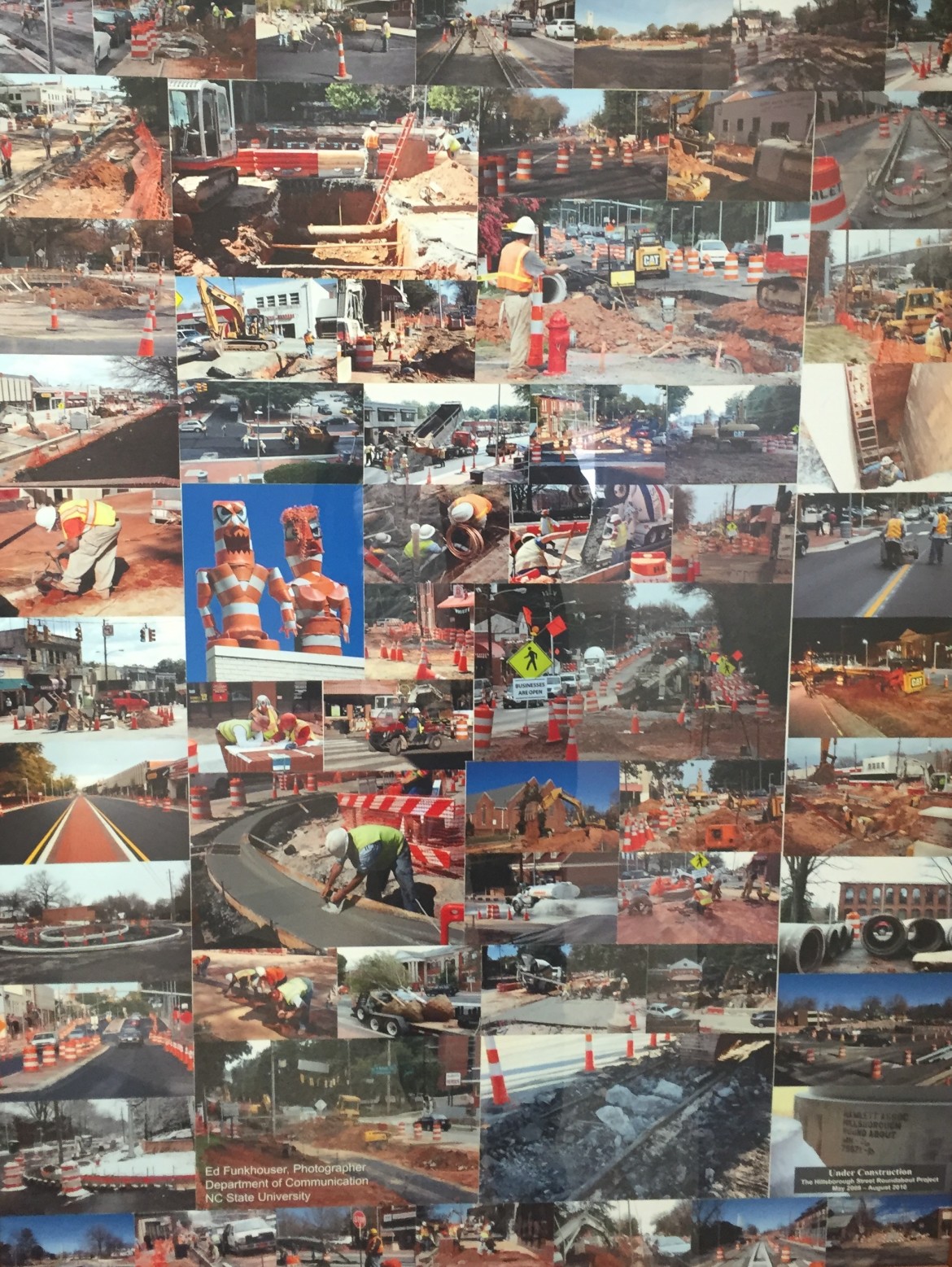Thursday, February 4, 2016
The plan to redevelop Hillsborough Street began nearly two decades ago, when a 1997 pedestrian fatality led a group of citizens to come together and begin evaluating the problems facing the area.
According to a report put together by the North Carolina Department of Transportation, problems at the time included “high pedestrian crash rates, traffic congestion, a lack of on-street parking, and a lack of bicycle infrastructure.”
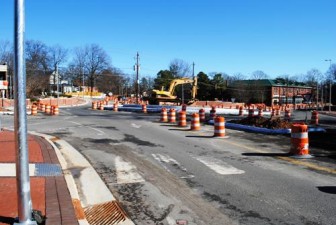
By 2001, there was a Feasibility Study, followed by “Phase Zero” of the project, which commenced in 2003 with the installation of a roundabout at the intersection of Pullen Road and Stinson Drive.
Construction on Phase I began in May 2009 and wrapped up the following year.
Now, bids are out for work on Phase II, which is anticipated to last from May of 2016 through the summer of 2017. According to the bid notice, the work will involve “Erosion control, curb and gutter, sidewalk, asphalt, pavement markings, traffic control, utilities, storm drainage, duct bank and conduits, landscaping and other incidental items for work along Hillsborough Street from approximately 300 feet west of Shepherd Street to Gardner Street.”
In addition, the project will involve 2,950 linear feet of roadway, 5,900 linear feet of sidewalk, 3,184 linear feet of public water and 3,248 linear feet of public sewer lines and appurtenances.
Estimates for this phase of construction have been in the $12.8 million range; the total cost is estimated around $17.3 million.
Earlier this week, I sat down with Richard Dickie, the project engineer with the City of Raleigh for the Phase II revitalization.
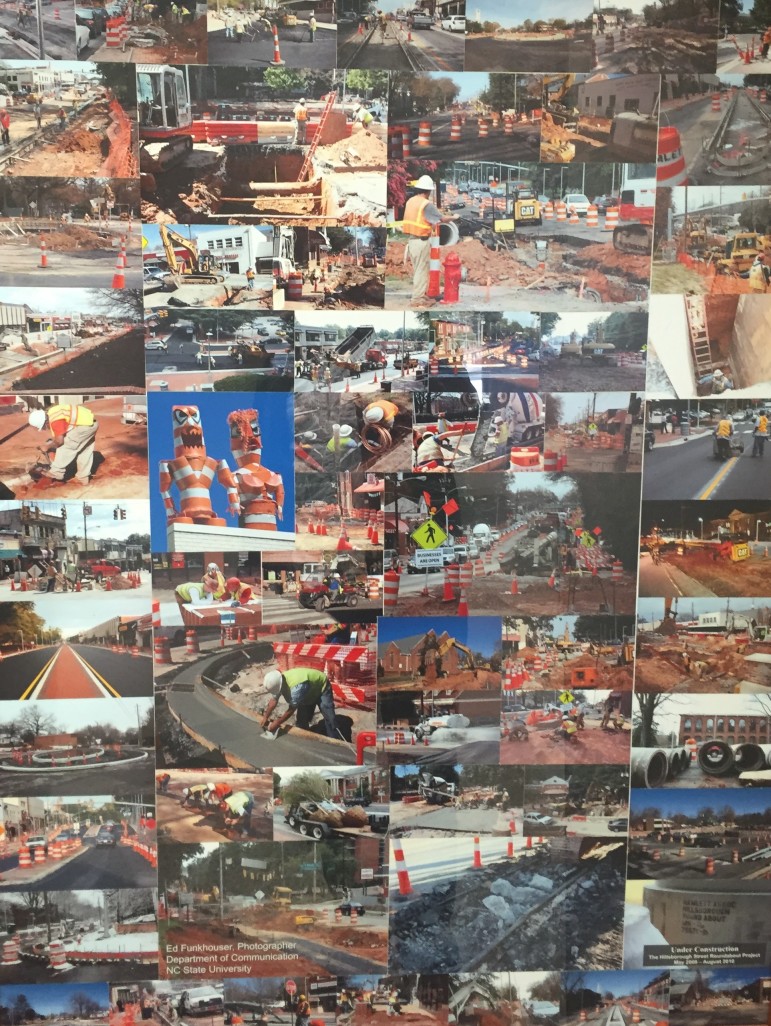
James Borden
This collage from Phase I of the revitalization sits in the corridor of the City’s Public Works Department at 222 West Hargett
Although the 1997 pedestrian fatality did not come up — I was unaware of it until I sat down to write this — Dickie emphasized the project’s focus on pedestrian safety.
Hillsborough Street, Dickie said, is the “highest pedestrian use area in the city; a large part of this is safety-oriented. We’ve put in the larger sidewalks to accommodate larger flows of people on Hillsborough Street.
“It’s identified as a very desirable biking corridor, yet if you’ve ever ridden down it — which I have — it can be scary. So we’ve got dedicated biking lanes with buffers against the on-street parking.”
The redevelopment, Dickie made clear, would improve the safety of both pedestrians and cyclists.

City of Raleigh
Either a rendering from a sequel to 2001: A Space Odyssey, or Public Art Preliminary Pier Design
In addition to improving the corridor’s safety, Phase II will also improve Hillsborough Street’s aesthetics, Dickie said.
“It’s going to be a nicer area, the sidewalks have been neglected and are cracked,” he noted, adding that the area will be:
“Just nicer to look at — we’re getting rid of all the overhead distribution electric lines and putting them underground. Unfortunately, the really tall guys, the transmission lines, will have to stay.”
Due to their size and the fact that they generate heat, the logistics and costs of placing the transmission lines underground were too much, Dickie said, although it was something they had received it a number of requests on.
In fact, Dickie said, the only place he knows of where Progress Energy has underground transmission lines is in Wilmington — under the river. I reached out to Progress Energy for more information on how this worked, but all an employee by the name of Sebastian would tell me was “Darlin’ it’s better, where it is wetter, take it from me.”
A number of people — such as property owner Chuck Grantham, who spoke before the Planning Commission last week — have expressed concerns over the ever-increasing density combined with existing traffic patterns and a plan to remove the center lane and replace it with a pedestrian median.
Dickie said he believes the new roundabouts will help alleviate much of the traffic.
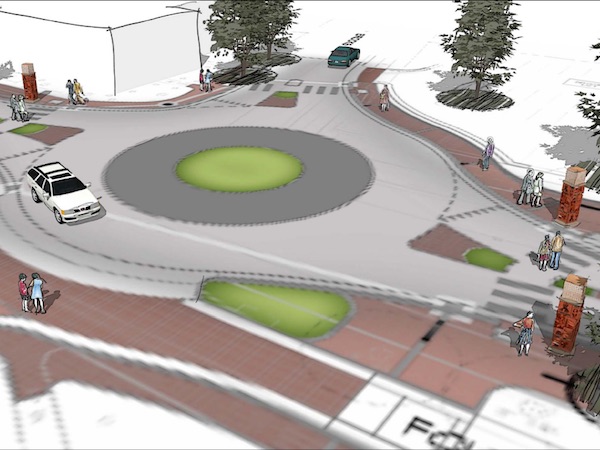
City of Raleigh
3D Sketch of Piers at Brooks Roundabout
“I think it’ll bear out that it’ll be a good thing for the street, because we’re going to eliminate four traffic signals, so from Garner to Gorman there’ll be no traffic signals. That alone should help the traffic flow — it may be slower, but it’ll be steady. You’ll flow right through the area.”
Here’s hoping he’s right.
Dickie said as the construction — which is scheduled to begin May 9, two days after NC State’s Commencement and last through September 2017 — is underway on Hillsborough, he wants to make sure that the existing businesses are not negatively impacted.
“I really like that area; you’ve got Cup of Joe, Reader’s Corner, there’s a number of existing establishments, and keeping them afloat through the project is one of my priorities.”
At this point, John Boyette with the City’s Public Affairs Office, who was sitting in on the meeting, interjected that keeping those businesses afloat was not a stated goal of the city. No offense to Mr. Boyette, who’s a great guy, but it seemed like an odd distinction to have to make.
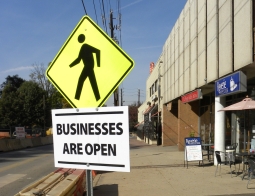 It’s not like Dickie said he wanted to see Cup of Joe and Reader’s Corner driven to bankruptcy and that he planned to dance on their rubble; that’s something the city would probably be wise to disassociate itself from. Instead, the city is saying, “Hey, all that crazy talk about keeping the existing Hillsborough Street establishments afloat during construction? We don’t want anything to do with that.” Note: Mr. Boyette wrote in to clarify that he was commenting on an opinion of Mr. Dickie’s regarding growth, and that of course the city wants to ensure the health of existing businesses during construction.
It’s not like Dickie said he wanted to see Cup of Joe and Reader’s Corner driven to bankruptcy and that he planned to dance on their rubble; that’s something the city would probably be wise to disassociate itself from. Instead, the city is saying, “Hey, all that crazy talk about keeping the existing Hillsborough Street establishments afloat during construction? We don’t want anything to do with that.” Note: Mr. Boyette wrote in to clarify that he was commenting on an opinion of Mr. Dickie’s regarding growth, and that of course the city wants to ensure the health of existing businesses during construction.
Note: for more information about the Hillsborough Street Project, you can check the City’s website for Phase II or the NCDOT site about the overall revitalization.
Note 2: We originally listed the cost of construction at $7 million; it is $12.8 million.
